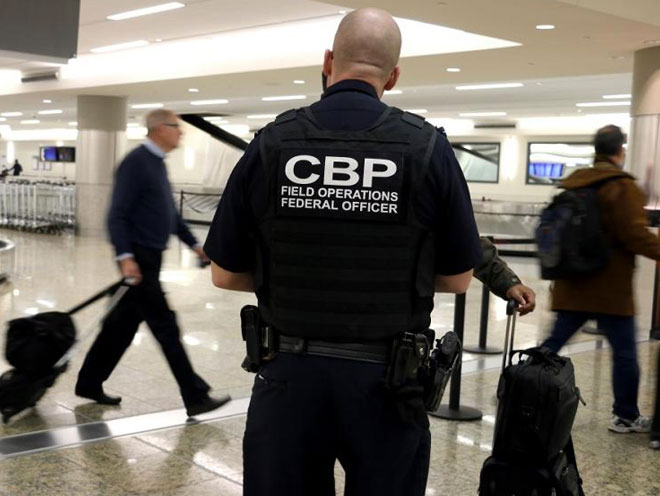A 55-year-old woman is alive today after two U.S. Customs and Border Protection (CBP) officers resuscitated her at Philadelphia International Airport (PHL) Saturday.
Officers Luis Castineiras and Mohammed Sajib heard pleas for help at the bottom of an escalator in the arrivals side of terminal A-East at about 5:15 p.m.
The officers rushed to the scene and encountered an unresponsive woman who was not breathing and started turning blue.
While Officer Sajib ran to grab the closest Automatic External Defibrillator (AED), Castineiras initiated Cardio Pulmonary Resuscitation (CPR).

Castineiras continued CPR until the woman breathed on her own. A woman passing nearby identified herself as a nurse and rendered assistance.
Philadelphia emergency medical technicians transported the woman to a local hospital for observation. CBP learned Sunday that the woman was treated and released.
CBP is not releasing the woman’s name due to privacy laws.
“I am proud of Officers Castineiras and Sajib,” said Joseph Martella, CBP’s Area Port Director for the Area Port of Philadelphia.
“It comes as no surprise to me that they immediately rendered decisive life-saving measures when they encountered a woman in serious medical distress.”
“We consistently retrain on basic life-saving skills throughout our careers, and though most of us may never have the need to exercise those skills, it is reassuring to know that when the bell rings, CBP officers can answer the call.”
In addition to learning customs and immigration laws, CBP officers learn basic life-saving skills during accession training at the Field Operations Academy, located at the Federal Law Enforcement Training Center.
Additionally, officers conduct periodic refresher training to retain those critical skills.

“Our entire Baltimore Field Office family is proud of the quick actions that Customs and Border Protection Officers Castineiras and Sajib took to save this woman’s life,” said Casey Owen Durst, CBP’s Field Operations Director in Baltimore.
“These officers’ actions demonstrate the dedication I see every day from the highly-trained and compassionate professionals of our Baltimore Field Office.”
CBP’s Office of Field Operations
Almost a million times each day, CBP officers welcome international travelers into the U.S.
In screening both foreign visitors and returning U.S. citizens, CBP uses a variety of techniques to intercept narcotics, unreported currency, weapons, prohibited agriculture, and other illicit products, and to assure that global tourism remains safe and strong.
For international travel tips, please visit CBP’s Travel webpage.
(For example, see this brief video explaining the things you should know when traveling to international destinations and returning to the U.S. Courtesy of U.S. Customs and Border Protection and YouTube)

















